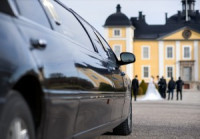Choice of spouse:
how much does inheritance count?
Heirs and heiresses often marry each other in France, finds a study published in the journal “Population.” Balzac’s Rastignac would have little chance of marrying a rich heiress today. Extremely high labour earnings are not enough: to wed a rentier (person of independent means), it’s best to come from a wealthy family.
In the novels of the nineteenth-century French writers Honoré de Balzac and Guy de Maupassant, impoverished, ambitious male characters seek to marry rich heiresses to move up in society. Today “people probably marry more often for love and the family has less sway than in the nineteenth century,” notes the economist Nicolas Frémeaux (Thema, Cergy-Pontoise university), who has inquired into whether inheritance (received or expected) still plays a role in couple formation. Does being from a wealthy family influence choice of spouse or life partner? Do heirs prefer to marry heiresses, and the other way round?
Social determinism of various sorts often inclines people to choose a life partner from their own social, religious or cultural milieu. In a article recently published in “Population,” Nicolas Frémeaux observes this resemblance between spouses or partner (called homogamy) from another angle, comparing the weight of labour income and inheritance in choice of spouse. His study is based on the Patrimoine survey on household wealth in France conducted every six years by the National Institute of Statistics and Economic Studies (INSEE). The data from the four survey waves (1992 to 2010) concern over 27,700 couples, not all of who were married. Frémeaux estimated total inheritance, either already received or expected, and each person’s “permanent” income.
Heiresses marry heirs—and vice-versa
Nearly 73% of men whose families have some degree of wealth to pass on are in an intimate relationship with a woman in the same situation, and over 77% of potential heiresses likewise have formed a couple with a potential heir. Similarity in received or expected inheritance levels is even stronger than labour income similarity. And the more substantial the inheritance, the more often heirs and heiresses choose to marry each other. For example, the heiresses making up the richest 5% are nearly 4.3 times more likely than heiresses with lesser means to have formed a couple with an heir as wealthy as themselves. The probability of Balzac’s protagonist Eugène de Rastignac wedding an heiress today is low.
A large income is no substitute for an inheritance
Furthermore, labour income cannot compensate for not having an inheritance, particularly among the wealthiest. A rich heir is more often attracted to a rich heiress than to a woman without a family fortune who earns a lot of money. The study thus brings to light a kind of dividing wall between the circle of heirs and that of wage earners.
Education has less weight in marriages where both spouses have inherited or will do
Whereas educational level explains a large degree of intra-couple income similarity, for heirs it only explains about 20%. Other mechanisms seem to come into play in fostering connections between heirs. Family strategy—for example, the organizing of high society balls for young people—together with the social prestige associated with inheritance and the fact that people from the same socio-economic class go to the same places, also shared family values, probably shape preferences in this group.
The connection between inheritance and marriage helps understand social inequality dynamics
According to Nicolas Frémeaux, studying ties between inheritance and marriage may enable us to better understand social inequality dynamics. He sees his research as complementary to recent studies on the return of inheritance and property in wealthy countries. With widening inequalities in personal wealth, he explains, matrimonial decisions are likely to have increasing impact on social mobility from one generation to the next.
|
Birds of a feather flock together ...The concept of homogamy Who marries whom? Sociologists and demographers regularly show that this highly personal choice is actually more a matter of social determinism—various types of which incline individuals to choose someone like themselves—than obedience to the laws of love and chance. In “Le Choix du Conjoint” [Choice of spouse], a classic sociological study published in 1964, Alain Girard stressed the power of “attraction between likes” in France in the late 1950s. The book presented the findings of a 1959 INED survey of married couples; it revealed strong geographical, social and cultural homogamy despite the significant changes that had occurred in French society. Girard also noted that dances, one of the places people meet their future spouse, brought together young men and women from the same social background. Fifty years later, Michel Bozon and Wilfried Rault have shown that the places where people meet their first life partner (not the same as those where they meet their first sexual partner) still differ by social milieu, a fact that works to maintain homogamy. |
Source: N. Frémeaux (2014), The role of inheritance and labour income in marital choices, Population, 69(4).
Contact: Nicolas Fremeaux
Online: April 2015

